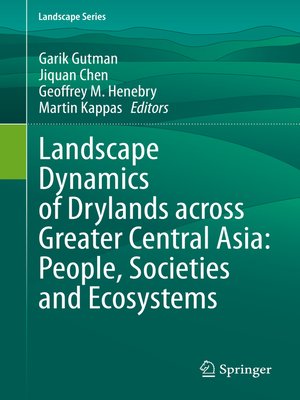Landscape Dynamics of Drylands across Greater Central Asia
ebook ∣ People, Societies and Ecosystems · Landscape Series
By Garik Gutman

Sign up to save your library
With an OverDrive account, you can save your favorite libraries for at-a-glance information about availability. Find out more about OverDrive accounts.
Find this title in Libby, the library reading app by OverDrive.



Search for a digital library with this title
Title found at these libraries:
| Library Name | Distance |
|---|---|
| Loading... |
This volume is a compilation of studies on interactions of changes in land cover, land use and climate with people, societies and ecosystems in drylands of Greater Central Asia. It explores the effects of collapse of socialist governance and management systems on land use in various parts of Central Asia, including former Soviet Union republics, Mongolia and northern drylands of China. Often, regional land-atmosphere feedbacks may have large global importance. Remote sensing is a primary tool in studying vast dryland territories where in situ observations are sporadic. State-of-the-art methods of satellite remote sensing combined with GIS and models are used to tackle science questions and provide an outlook of current changes at land surface and potential scenarios for the future.
In 10 chapters, contributing authors cover topics such as water resources, effects of institutional changes on urban centers and agriculture, landscape dynamics, and the primary drivers of environmental changes in dryland environment. Satellite observations that have accumulated during the last five decades provide a rich time series of the dynamic land surface, enabling systematic analysis of changes in land cover and land use from space.
The book is a truly international effort by a team of scientists from the U.S., Europe and Central Asia. It is directed at the broad science community including graduate students, academics and other professionals at all levels within natural and social sciences. In particular, it will appeal to geographers, environmental and social scientists, economists, agricultural scientists, and remote sensing specialists.







